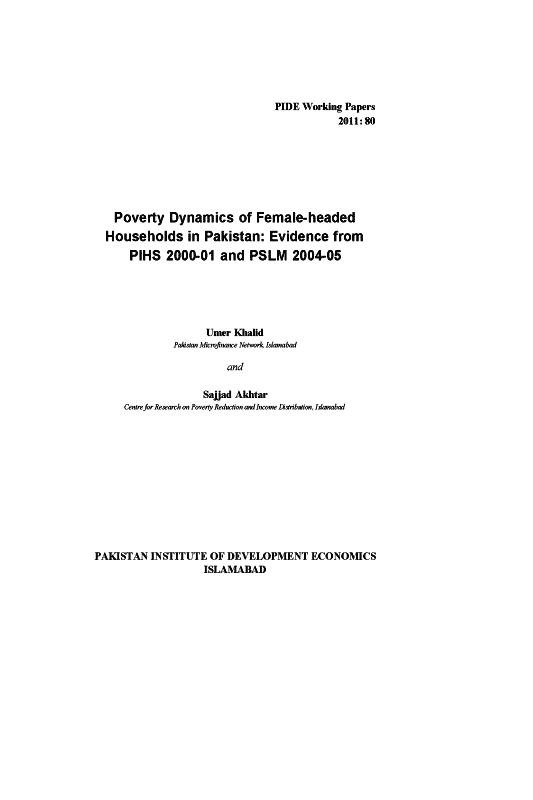
Pakistan Institute of Development Economics
- Home
Our Portals
MenuMenuMenuMenuMenuMenuMenu - ResearchMenuMenuMenuMenuMenuMenuMenu
- Discourse
- The PDR
- Our Researchers
- Academics
- Degree Verification
- Thesis Portal
- Our Portals
Poverty Dynamics of Female-headed Households in Pakistan: Evidence from PIHS 2000-01 and PSLM 2004-05
The paper attempts to empirically test a naïve version of what is rather stylistically termed as “feminisation of poverty”, using the sub-sample of female -headed households (FHHs) from two household surveys in Pakistan. Although, the database is constrained by quality factors and small sample size, the following findings add to the richness of current research in this area: (a) The numerical incidence of poverty among households headed by females is less than that for all households in the country, at the national, urban and rural level for both the years. This can be traced to the finding that more than 70 percent of households headed by females receive remittances, (b) The incidence of poverty among FHHs during the period 2000-01 to 2004-05 did not decline as fast as it did for mixed households, nationwide. In urban areas, it did not decline at all, (c) Among the determinants of poverty of FHHs, illiteracy, dependency and rural residence exacerbate poverty, while remittances domestic and/ or foreign reduce poverty, (d) The dynamics of incidence of poverty among FHHs during the period indicated that Illiteracy as the factor exacerbating poverty became less important in 2004-05. Moreover, residence in rural areas was also a weaker factor in determining the incidence of poverty. By far the most notable contribution in reducing the incidence of poverty was self-employment in agriculture in 2004-05.



